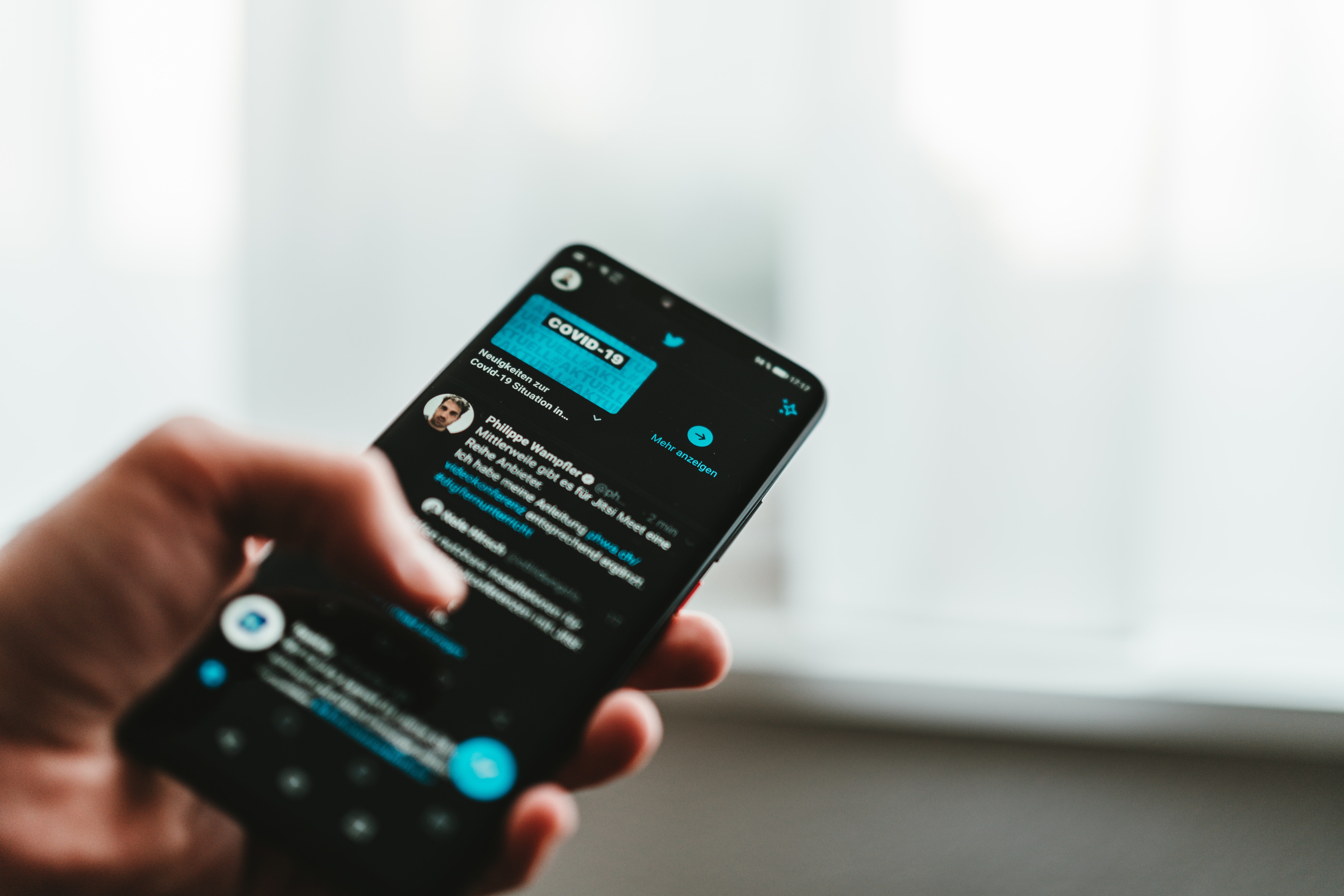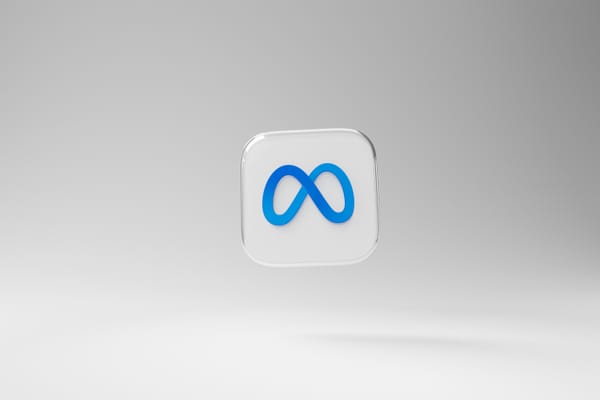How Twitter could take NFTs mainstream
Are NFT profiles Twitter users' next big invention?

Programming note: Today is Platformer’s first birthday! Thanks to so all of you who renewed your subscriptions today, or subscribed for the first time. I’m feeling great about what year two will bring — I can’t tell you how much it means to me that you’ve chosen to support this project.

There’s an increasingly popular vision of the future where technological innovation is driven primarily by cryptocurrencies, and I can’t tell if that vision is having a good week or a bad one.
On one hand, two platforms for trading sports-themed non-fungible tokens — essentially, digital trading cards — this week raised more than $1 billion between them. The maniacs over at Andreessen Horowitz led a $200 million investment in the Decentralized Social blockchain, which aims to serve as the coin of the realm for a whole suite of new crypto-based social networks. OpenSea, a platform for trading NFTs, has a mobile app now. It feels like things are moving.
Then again, there are signs that the mania is cooling. Most assets sold in the last 90 days on OpenSea haven’t seen another deal since. US regulators have begun investigating the space in earnest, and recently scuttled a Coinbase securities offering and may soon issue new rules for stablecoins.
More than any of that, however, there’s a sense that NFTs have been caught in that famous ditch between early adopters and the mainstream. That’s not unusual for a technology at this stage, of course. But it’s still fair to wonder what might cause them to break through.
That’s why I was so interested to hear today’s news from Twitter. At a virtual briefing that I attended, the company announced a suite of new and upcoming features, many of them focused on cryptocurrencies. The most interesting by far, I think, is that the company says it’s investigating a way for users to highlight any NFTs they own on their Twitter profiles. And these would be no ordinary profile pictures — Twitter would authenticate your ownership of that NFT, and that authentication will be visible on your profile.
Maybe your reaction to this news falls somewhere in between “who cares” and “ugh.” But I think it could be a big deal, and for this reason: NFTs are art, and a person’s Twitter profile is among the higher-profile public spaces that belong to them. It’s a logical place to hang the most valuable piece of art you own. And should that behavior become more common, NFTs could move a bit further into the mainstream.
In August, Packy McCormick wrote about CryptoPunks, a set of 10,000 artworks from 2017 whose cheapest available NFT is currently selling for $302,000. In the essay, titled “Status Monkeys,” McCormick writes about how NFTs take advantage of the natural human impulse to seek clout online. He described the social mechanics of Punks this way:
Owning a Punk is a status symbol, like owning a Ferrari or an expensive handbag. Punk owners often use the image of their Punk as their profile picture (PFP). Displaying a Punk that you don’t own as your profile picture is frowned upon.
If you follow anyone in NFT world, you’ve likely already noticed that they’re using a colorful cartoon avatar instead of the traditional profile photo. At the moment, none of these are authenticated, meaning it’s easy to fake your status in the community. (This is partially why some people are now verifying themselves by posting a public “.ETH” address in their Twitter handle, allowing anyone to look up what’s in their public wallet.)
It’s easy to see how Twitter got from these existing dynamics on the platform to the idea of NFT authentication. It solves the “problem” of people using other people’s NFTs as profile pictures, while simultaneously giving its user base a new way to accumulate clout on the platform. (What else is Twitter, in the end, but a platform for accumulating clout?)
I asked Esther Crawford, Twitter’s product lead for creator monetization, what these verified NFTs might look like. In one version, you might simply get a badge not unlike today’s verification checkmarks. In another, Twitter might actually change the shape of your avatar to signal that it’s a verified NFT.
“We’re basically just making it visually clear that this is an authenticated avatar, and then giving you some interesting info and insight about the provenance of that NFT,” she told me.
Twitter has been tiptoeing into cryptocurrencies for some time now. Its CEO, Jack Dorsey, is a famous Bitcoin booster, which helps explain today’s other announcements: Twitter will soon let you begin accepting tips in Bitcoin through a partnership with the Bitcoin wallet app Strike. And back in June, Twitter gave away 140 NFTs for free to its user base.
The overarching idea is less about promoting blockchain projects generally than it is about helping creators make money. “We want to turn followers into fans, and fans into funds,” said Kayvon Beykpour, Twitter’s head of product. Bitcoin helps in that project in part because it can be more accessible to people who do not have access to traditional banks, particularly people outside the United States.
Of course, it’s possible that the mania for NFTs will fade, and there will be less enthusiasm for verified cartoons as profile pictures as Twitter currently imagines. Twitter profile features come and go — remember when they showed how many Vine loops your videos had earned, years after Vine itself was shuttered?
But it’s also true that new technologies can’t truly go mainstream until someone first lays down the basic rails and supporting infrastructure. What Twitter announced today looks to me like the sort of rails that could give NFTs a meaningful boost. And as more people start buying rare digital art, I wouldn’t be surprised to see other social networks follow with authenticated NFT features of their own.
Should all of this happen, it will be only the latest instance of Twitter users inventing a feature that the company would later make native to its apps. Twitter users brought us retweets and @ replies; they brought us hashtags and tweetstorms as well. It doesn’t seem too far-fetched that CryptoPunk enthusiats might have just invented the NFT profile.
In which case I think we’ll look back and think that this was a very good week for cryptocurrencies indeed.
Elsewhere: Twitter is finally fixing the thing where tweets disappear as you scroll through the timeline. And the company today also announced a feature it is testing called “Heads Up,” which attempts to warn users before they enter a heated conversation.
Pushback
There was a fairly fascinating reaction to yesterday’s column about why I think the Facebook Files series represents such a problem for Facebook. Among current and former Facebook employees, I got an unusually divided response. Some think this isn’t nearly as big a deal as Cambridge Analytica, in part because the latter got far more press attention. Others think it’s a bigger deal, since unlike Cambridge Analytica the Wall Street Journal series documents actual harms to real people. (I think these folks have it right.)
Regarding my suggestion that Facebook do more research, I got the same divided response: plenty of “yes please,” but also a lot of “yeah, right.” For the latter group, the biggest impediment to doing more research is the knowledge that the press will use each new report as a cudgel with which to beat the company. Of course, that assumes that more research will primarily identify more harms! In reality the findings would probably be a mixed bag, and we would all benefit from seeing that data. Plus, it would let Facebook look morally superior to all its peer platforms who aren’t doing research anything like this.
In any case, Facebook is sending its head of safety, Antigone Davis, to testify before Congress on the subject next week. Meanwhile, Sen. Marsha Blackburn (R-TN) says she is in contact with the Journal whistleblower, who plans to reveal their identity at some point soon. In the meantime, she said, they are cooperating with Congress and may eventually testify before it.
Meanwhile, here’s a new data point for you: in a survey, 84 percent of Americans say they are “very nervous” about the effects of social media on children. Did 84 percent of Americans care about Cambridge Analytica?
One correction from yesterday: citing MIT Tech Review reporting, I said “Eastern European troll farms reached 140 million people a month with propaganda — and 75 percent of those users saw it not because they followed a page but because Facebook’s recommendation engine served it to them.” In reality, I’m told, those people saw those posts because they were shared by people who followed those pages. So it was not actually an issue with the recommendation engine.
Governing
⭐ Germany’s stringent anti-hate speech laws have largely failed to stem the tide of harassment leading up to its elections on Sunday. An instructive story for those who believe that government speech regulations are a cure-all. Here’s Adam Satariano in the New York Times:
Some critics of the law say it is too weak, with limited enforcement and oversight. They also maintain that many forms of abuse are deemed legal by the platforms, such as certain kinds of harassment of women and public officials. And when companies do remove illegal material, critics say, they often do not alert the authorities or share information about the posts, making prosecutions of the people publishing the material far more difficult. Another loophole, they say, is that smaller platforms like the messaging app Telegram, popular among far-right groups, are not subject to the law.
Free-expression groups criticize the law on other grounds. They argue that the law should be abolished not only because it fails to protect victims of online abuse and harassment, but also because it sets a dangerous precedent for government censorship of the internet.
A lawsuit brought by tech trade groups seeks to overturn the Texas social media law that would, among other things, require platforms to host hate speech. They successfully routed a similar law in Florida. (James Pollard / Texas Tribune)
A federal judge ordered Facebook to turn over records related to user accounts it shut down in 2018 related to the genocide in Myanmar. Facebook fought the requests citing user privacy concerns; the judge said the company’s refusal amounted to obstructing justice in a genocide. (Aruna Viswanatha / Wall Street Journal)
California Gov. Gavin Newsom signed into law a bill that will require companies like Amazon to disclose production quotas to workers and “prohibit the use of algorithms that can lead workers to skip taking state-mandated breaks or using the bathroom when needed.” Good! (Jay Greene / Washington Post)
The United States and European Union plan to work together on platform regulation, according to a draft memo. The rare piece of news that would slow the splintering of the internet, rather than accelerate it. (Nandita Bose / Reuters)
The European Union outlined plans to require smartphone makers to use USB-C cables for charging. Finally some tech regulation we can all agree on. (Kelvin Chan / AP)
Google is seeking to settle an antitrust case against it in the European Union. The case involves its digital advertising business; no details yet on what Google has proposed to regulators. (Foo Yun Chee / Reuters)
Big Tech has unveiled its latest antitrust defense: 12 former national security officials who think antitrust regulation is bad, and who also are paid by big tech. Not sure this will work. (Emily Birnbaum / Politico)
Russia is testing new disinformation campaigns to get around western defenses. Their latest trick is to flood mainstream media outlets with pro-Kremlin comments. Martha Muir / Financial Times)
Industry
Facebook shared its “content distribution guidelines” for the first time, detailing roughly three dozen scenarios in which it will reduce the distribution of posts in the News Feed. But it declined to answer basic questions about how much distribution is reduced, or the extent to which some violations are considered more serious than others. (Alex Heath / The Verge)
A look at the great lengths to which Google goes to catch leakers. It’s a fascinating (and disturbing) set of techniques, from looking up who seems interested in COBRA insurance (because they might be leaving) and analyzing who is taking screenshots while using encrypted messaging devices. (Sarah Krouse / The Information)
YouTube is testing desktop video downloads for premium subscribers. The test ends October 19, though. (Michael Crider / Android Police)
In response to App Tracking Transparency, some developers are turning to advanced “fingerprinting” techniques to maintain their ability to micro-target ads. Will Facebook pull a stunt like this? (Geoffrey Fowler and Tatum Hunter / Washington Post)
A look at “ByteStyles,” the internal principles that shape the culture at ByteDance. They’re fairly generic. (Dan Whateley / Insider)
Those good tweets
Told this girl I didn’t have a car, she saved me in her phone as “Legs” 🥲
— NUFF (@nuffsaidny) 3:30 PM ∙ Sep 21, 2021
The best tv crit I’ve heard in a while is my mom finished watching the Sopranos for the 1st time a few weeks ago and I asked her if she liked it and she was like “Not really, but it shows you how those people really are.” And I was like “What people?” And she said, "The Sopranos"
— Baby Pete Toms (@fancypetetoms) 1:15 AM ∙ Sep 22, 2021
when there was a huge fight in the group chat but you were asleep:
— 𝓈𝒽𝒾𝓉 (@vibeshiiit) 1:13 PM ∙ Sep 21, 2021
Pressing both at the same time takes a screenshot
— Sam Henri-Gold (@samhenrigold) 2:32 AM ∙ Sep 22, 2021
Talk to me
Send me tips, comments, questions, and authenticated NFTs: casey@platformer.news.





